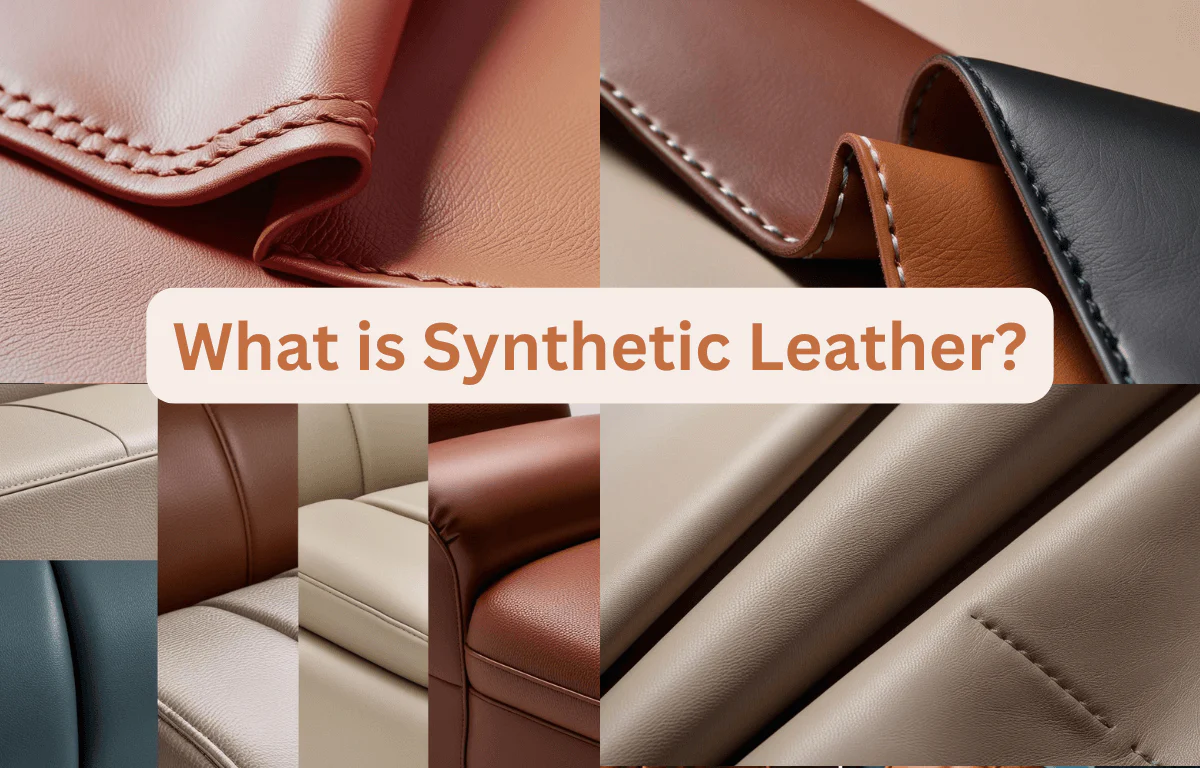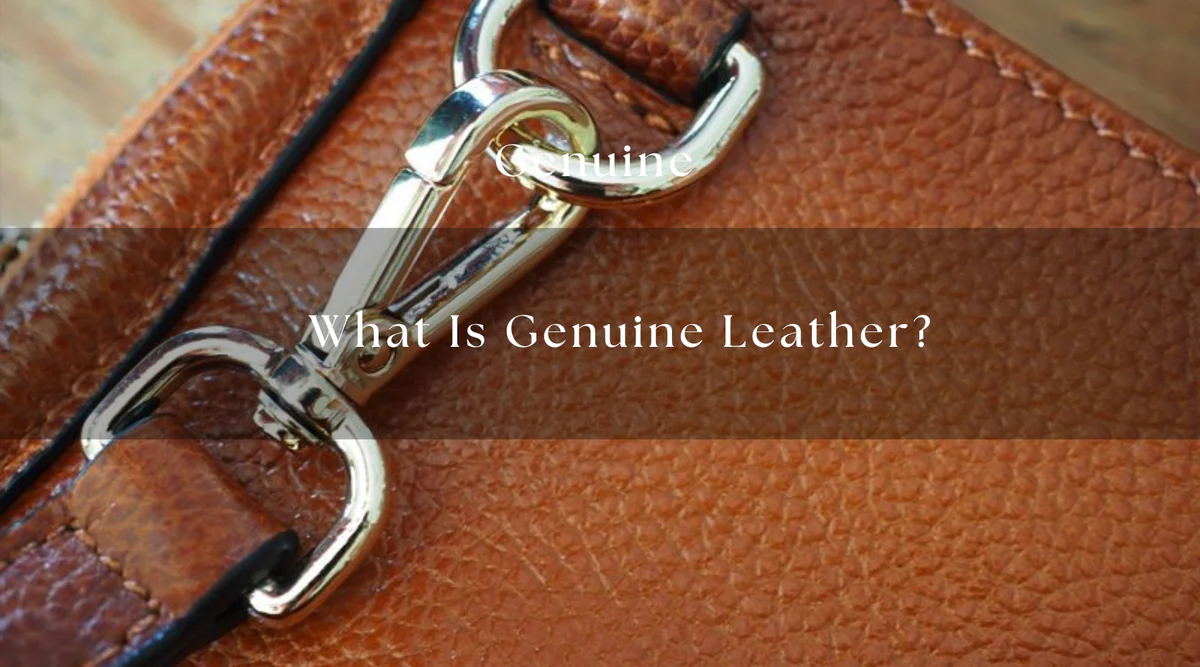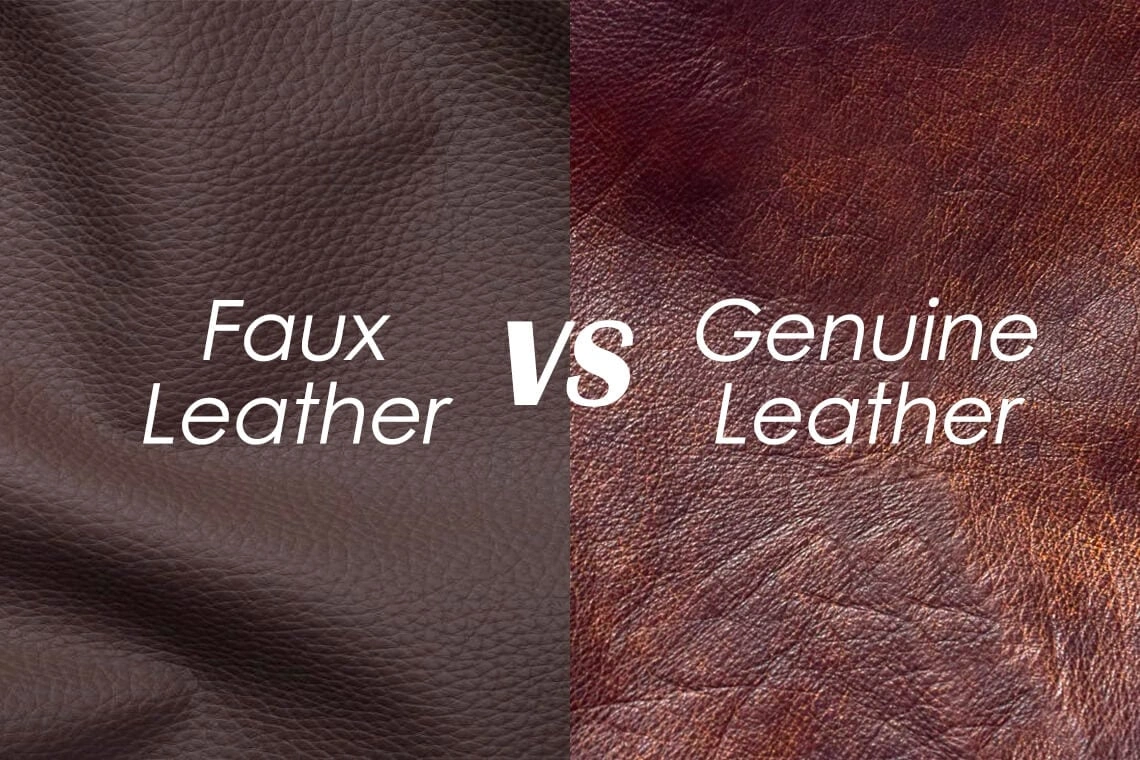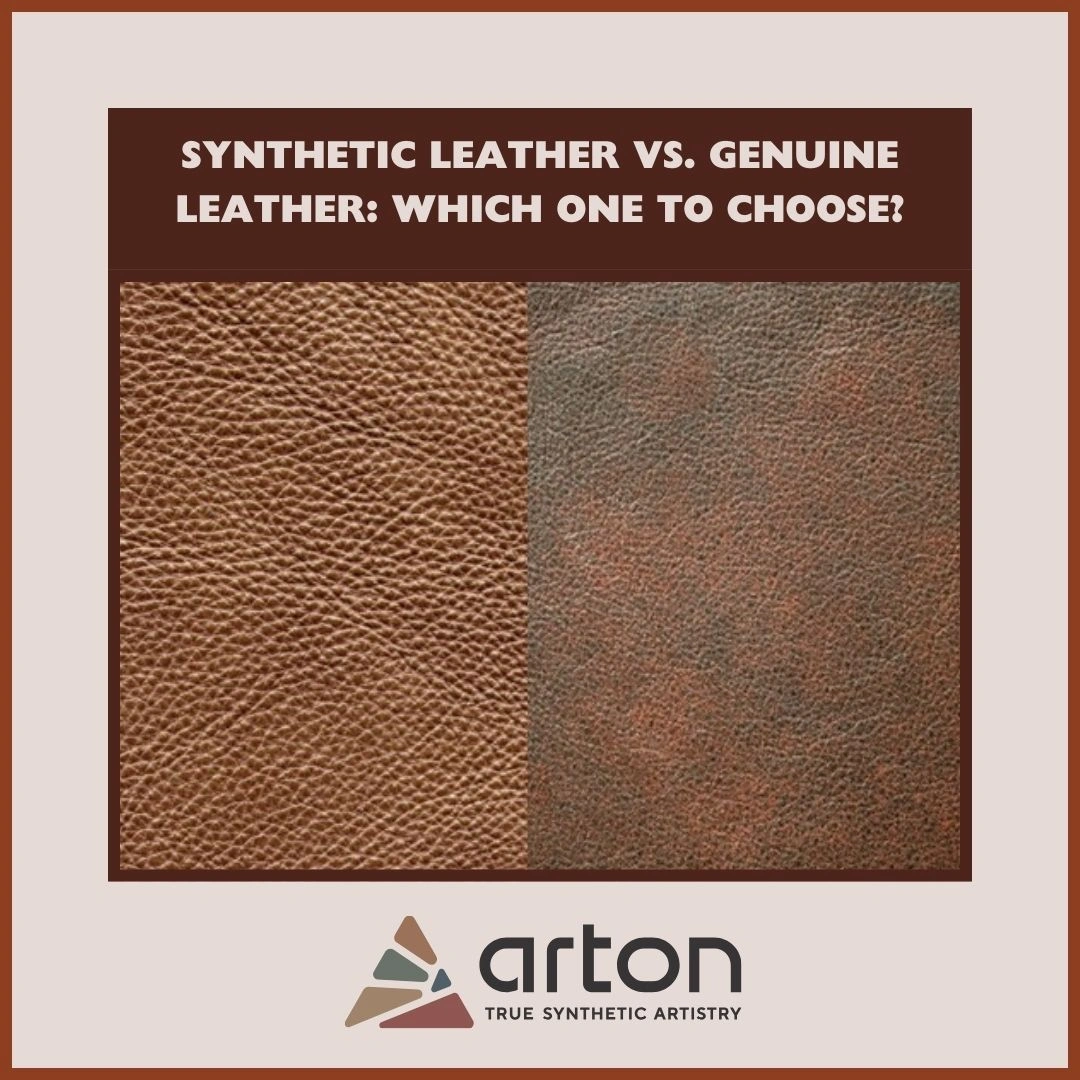03 April, 2025
If you are buying leather products then the above issue can arise while choosing between synthetic leather and genuine leather. Each material also has its strengths and weaknesses which makes it heavily dependent on personal preference as well as a budget and use. So in this blog, I am going to tell you what are the main differences between synthetic and genuine leather so you can choose a better way.
What is Synthetic Leather?
Faux leather, also called synthetic leather, is made of a plastic base, like polyurethane (PU) or polyvinyl chloride (PVC), which is treated to look and feel like real leather. This is widely used in upholstery because of its affordability and versatility, as it is used in furniture, clothing, footwear and automotive industry.

Key Characteristics of Synthetic Leather
-
Smooth and uniform texture
-
Less durable than genuine leather
-
Water-resistant and easy to clean
-
More affordable than genuine leather
-
Made from petroleum-based materials
Types of Synthetic Leather
-
PU Leather (Polyurethane Leather): Softer, more flexible, and breathable.
-
PVC Leather (Polyvinyl Chloride Leather): More durable and water-resistant but less breathable.
- Microfiber Leather: High-quality synthetic leather with better texture and durability.
Pros of Synthetic Leather
Budget-friendly: Often less expensive than real leather, making it a good alternative for people looking on a budget.
Cruelty free: As it is not made from animal hides, it is a cruelty free and vegan friendly option.
Variety of designs: Available in a wide range of colors, textures, and patterns.
Easy maintenance: Stain and water resistant, Easy to clean.
Durability: Resistant to cracking and fading as long as it is taken care of properly.
Cons of Synthetic Leather
Less breathable: Synthetic leather does not have the natural pores, so it is less comfortable to wear for long periods.
Wear out faster: Will tend to wear out quicker than genuine leather especially in high use applications.
What is Genuine Leather?
Animal hides are used to make genuine leather, which is then processed with a tanning process in order to strengthen it. It is extremely treasured for its luxurious finish, strength as well as its eternal appeal, it's this longevity that classifies it.

Key Characteristics of Genuine Leather
-
Natural grain and texture
-
High durability and strength
-
Breathable and flexible
-
Develops a patina over time
-
Requires maintenance and conditioning
Types of Genuine Leather
-
Full-Grain Leather: The highest quality with a natural texture.
-
Top Grain Leather: a little processed in that it is smoothed out for a better finish.
-
Lower Grade : Made from leftover hide layers, this is Genuine Leather.
-
Bonded Leather: Produced from scraps of leather that are bonded by adhesive.
Pros of Genuine Leather
Durability: Can last for decades with proper care, often develop a nice patina over time.
Naturally Porous: Allows more air movement and less discomfort.
premium feel: Soft, supple, luxurious texture that improves with age.
Biodegradable: When ethically sourced a more sustainable alternative to synthetics.
Cons of Genuine Leather
Higher cost: More expensive due to its natural origin and extensive processing.
Maintenance intensive: Need to condition and special care to avoid drying, cracking, and staining.
Not vegan friendly: As it's sourced from animal hides, this is not a good choice for anyone looking for cruelty free options.
Synthetic Leather vs. Genuine Leather: A Detailed Comparison
| Feature | Synthetic Leather | Genuine Leather |
| Cost | Affordable | Expensive |
| Durability | Wears out faster, can crack or peel | Long-lasting, can last decades |
| Maintenance | Easy to clean, no conditioning required | Needs regular care and conditioning |
| Breathability | Less breathable | Highly breathable |
| Resistance | Water-resistant | Absorbs water, prone to staining |
| Aesthetics | Looks artificial, does not age well | Develops a beautiful patina over time |
| Comfort | Can feel sticky, does not adjust to temperature | Becomes softer and more comfortable with time |
| Vegan-Friendly | Yes | No |
Which One Should You Choose?

Choose Synthetic Leather If:
-
You need a low budget option.
-
The material must be water resistant.
-
This is vegan friendly.
-
You don’t want to spend time keeping maintenance on the leather.
Choose Genuine Leather If:
-
You put worth into longevity & durability.
-
You want a material that ages beautifully.
-
You are ready to invest on quality.
-
You don’t mind routine maintenance.
Pick the Best Synthetic Leather!
Final Thoughts
Synthetic and genuine leathers have their own pros and cons. Synthetic leather and genuine leather are both choices and they depend on your needs, budget and values. Unlike manmade options, genuine leather possesses incredible durability, a luxurious texture, and can age naturally when handled, providing it as the perfect fit for luxury products like furniture, clothing, footwear and automotive industry that will last over the long term. On the other hand, synthetic leather provides a more affordable, low-maintenance, and eco-friendly alternative, perfect for those seeking style without the high cost or ethical concerns of real leather.
Real leather is the way to go if you want longevity and classic look. Synthetic leather, however, may be the wisest option if affordability, versatility, and sustainability are the biggest factors. In the end, the best is the one that is in line with your lifestyle and preference.
At Rock Uniquoters, we specialize in high-quality synthetic leather solutions that deliver the look and feel of genuine leather without the drawbacks.



